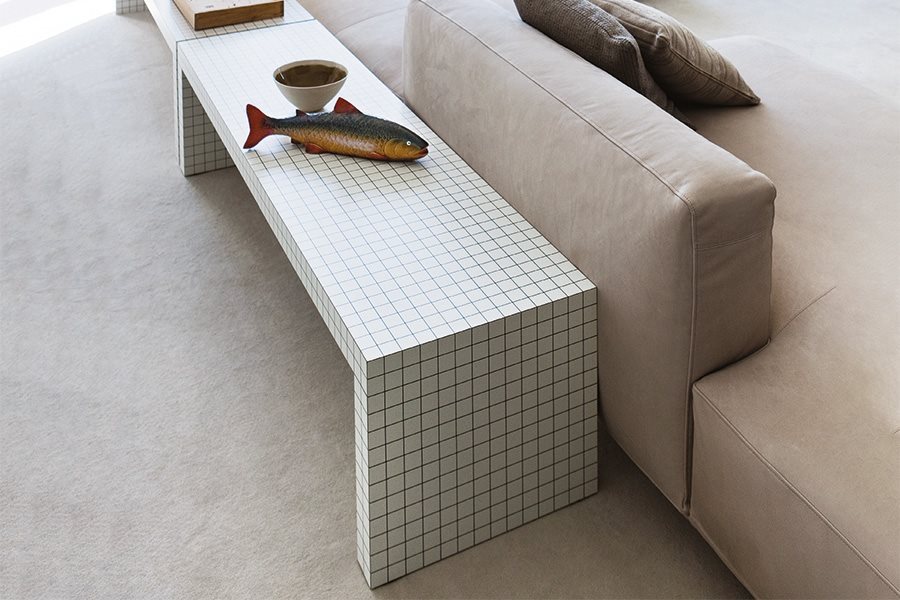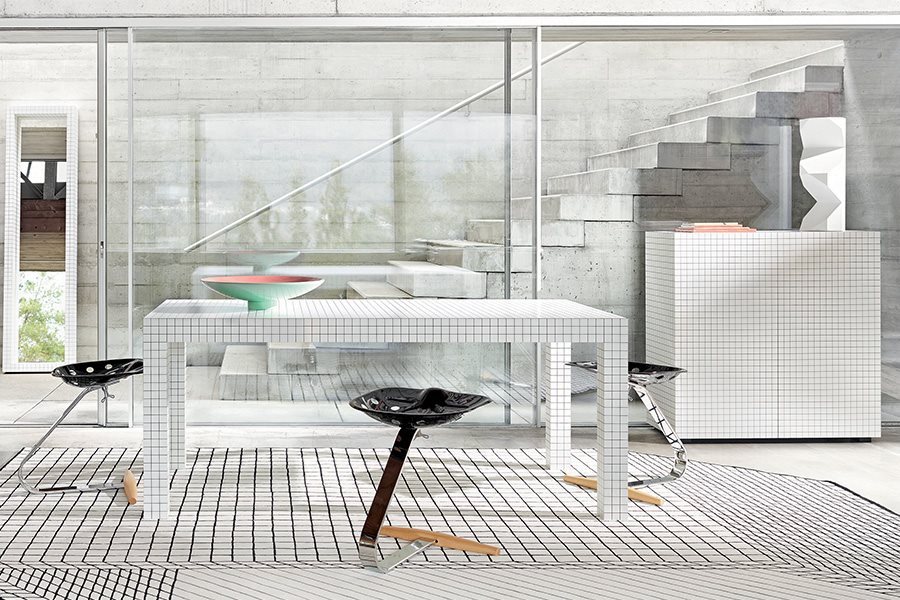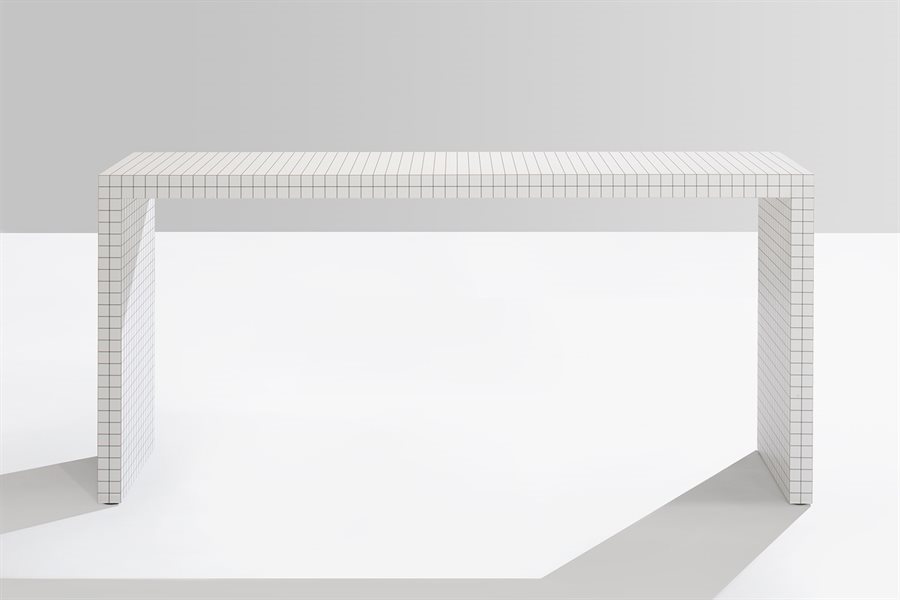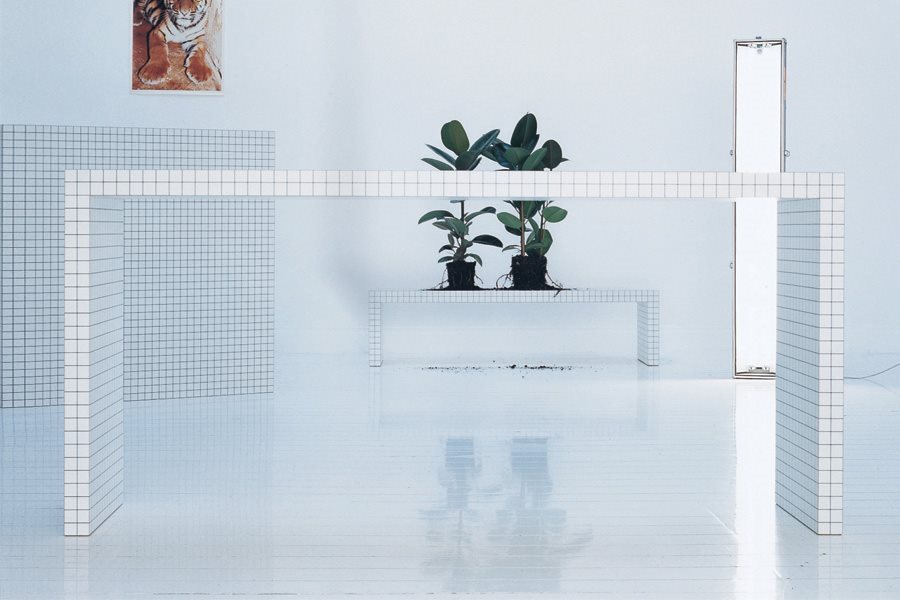The ’70s were the years of transition and rethinking, but also of visionary utopias that evolutionised parameters, ideas, styles and prospects. Quaderna was launched in 1970. Designed by Superstudio in Florence – the firm was formed by Adolfo Natalini and Cristiano Toraldo from France in 1966 – it was sent in for production in 1972 by Zanotta, whose catalogue still publishes it. Those were the years of “radical design”, a very active movement in the Florentine area that openly contested both the status of design in the late 1960s and the entire social and operating framework of designers. An open criticism to the rigid and dogmatic functionalism of academies that were contested by a liberating vision of both life and projects. Natalini and colleagues were working on “Histograms” in 1969: objects constructed on a spatial grid made of perpendicular links that could be adjusted to suit any scale, ranging from design to town planning (the famous “Continuous monument”). It was a sort of “Artificial landscape” that was both neutral and strong and could be extended as much as one likes. Superstudio first thought of a single checked top “with legs” that could turn into table, sleeping space, chair, bed, bench, wardrobe or stool. Hence the birth of a unique and unrepeatable family of furnishing items, an icon based on regular geometrical shapes coated with checked white laminate (specially created by Abet Print, it was called Misura) and characterised by very rigorous, simple and perfect shapes. “We never thought of a checked future, a world of beauty and reason. Once the black frame was removed from table tops, there only remained a chessboard for angels”, said members of Superstudio. The collection has been awarded several prizes and it is exhibited in leading museums throughout the world.
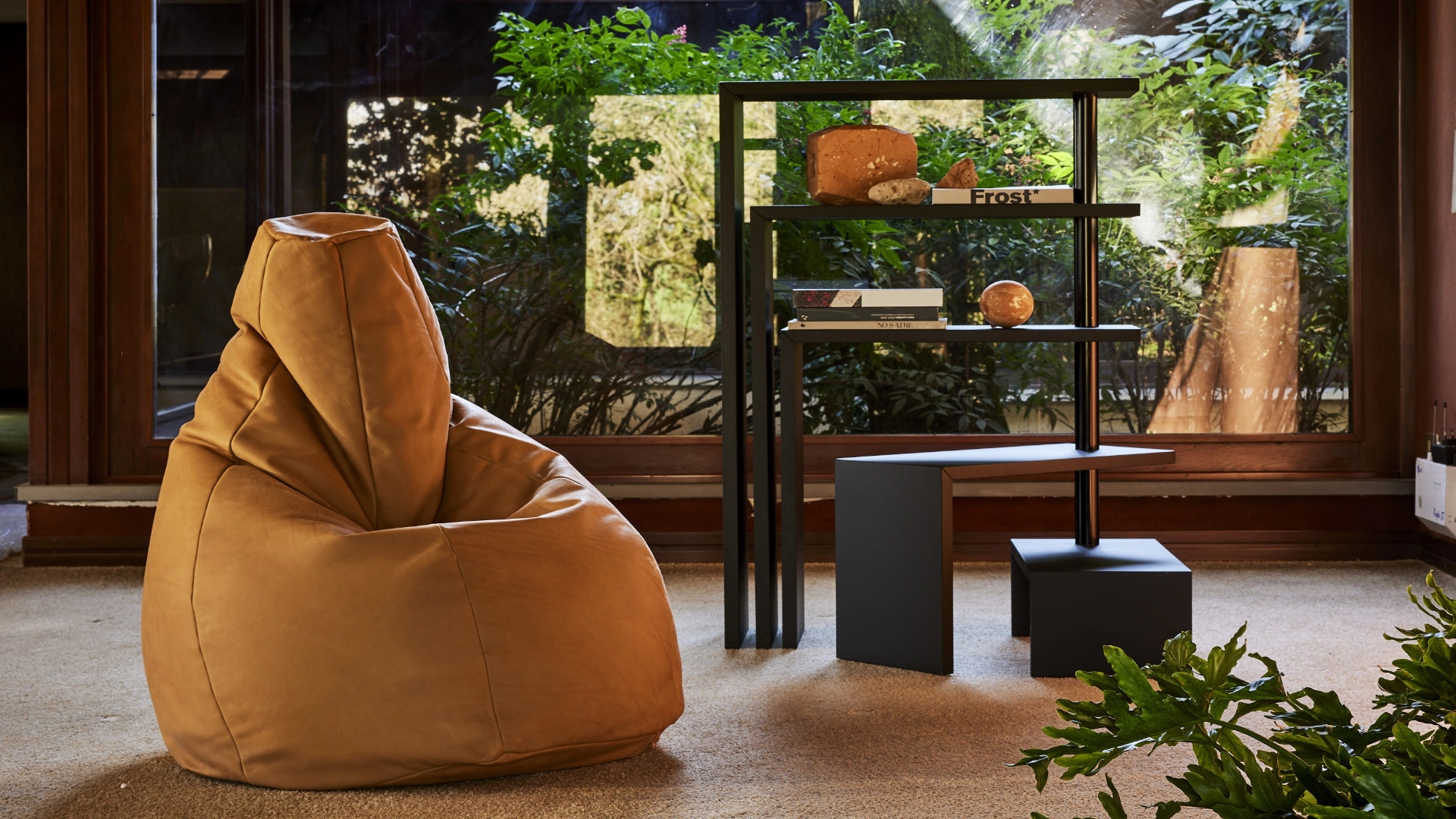
Iscriviti alla Newsletter
Be the first to be informed about the latest news, upcoming events and new products by Zanotta.
.jpg)
.jpg)
